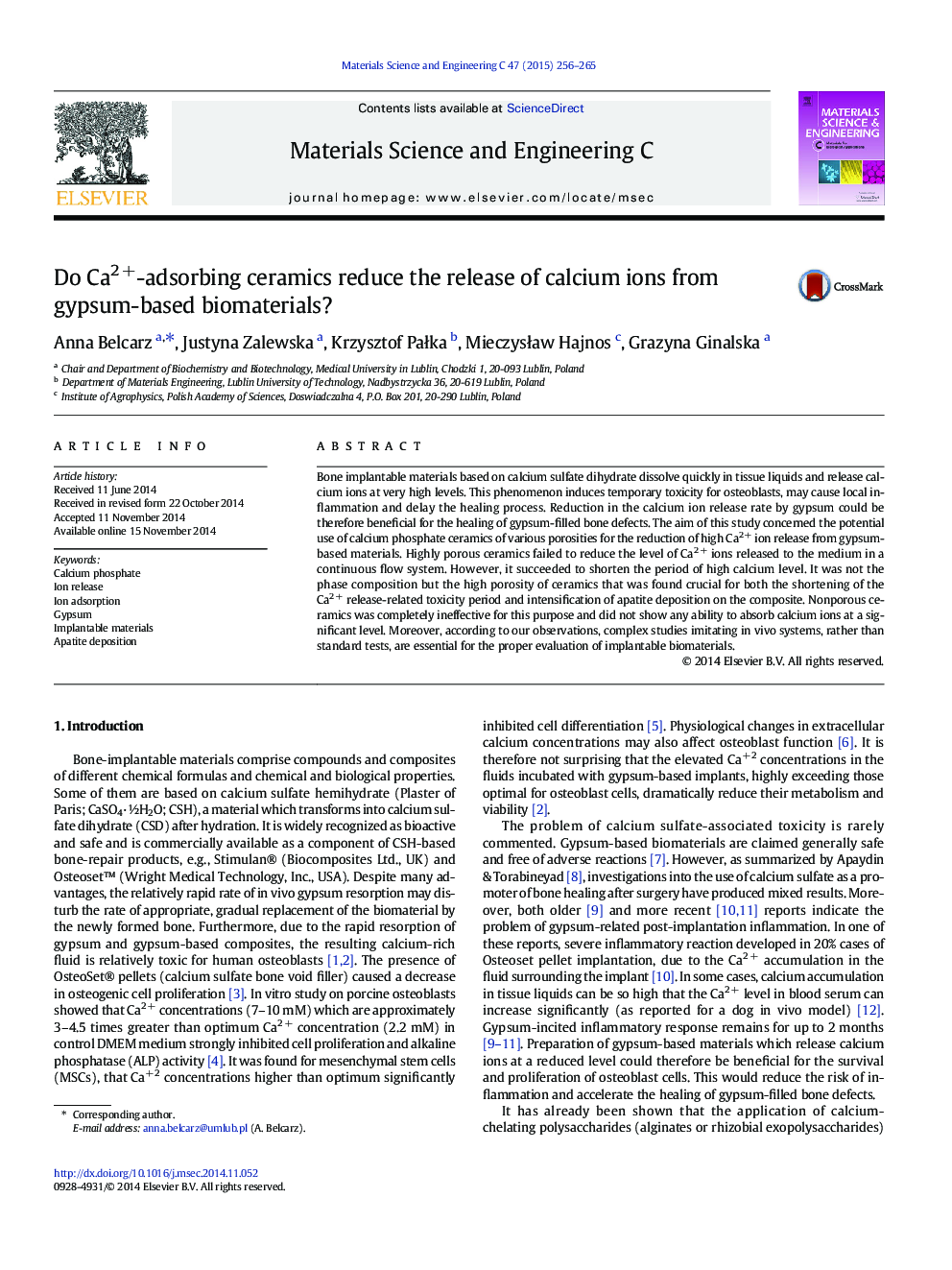| Article ID | Journal | Published Year | Pages | File Type |
|---|---|---|---|---|
| 1428400 | Materials Science and Engineering: C | 2015 | 10 Pages |
•Extensive Ca2 + release from gypsum may negatively affect the implant healing process.•Highly porous calcium phosphate ceramics extensively absorbed Ca2 + and HPO42 − ions.•Porous ceramics shortened the period of extensive Ca2 + release from gypsum.•Nonporous ceramics lacked efficiency in the reduction of Ca2 + release from gypsum.•In vivo-mimicking tests are crucial for the proper evaluation of biomaterial properties.
Bone implantable materials based on calcium sulfate dihydrate dissolve quickly in tissue liquids and release calcium ions at very high levels. This phenomenon induces temporary toxicity for osteoblasts, may cause local inflammation and delay the healing process. Reduction in the calcium ion release rate by gypsum could be therefore beneficial for the healing of gypsum-filled bone defects. The aim of this study concerned the potential use of calcium phosphate ceramics of various porosities for the reduction of high Ca2 + ion release from gypsum-based materials. Highly porous ceramics failed to reduce the level of Ca2 + ions released to the medium in a continuous flow system. However, it succeeded to shorten the period of high calcium level. It was not the phase composition but the high porosity of ceramics that was found crucial for both the shortening of the Ca2 + release-related toxicity period and intensification of apatite deposition on the composite. Nonporous ceramics was completely ineffective for this purpose and did not show any ability to absorb calcium ions at a significant level. Moreover, according to our observations, complex studies imitating in vivo systems, rather than standard tests, are essential for the proper evaluation of implantable biomaterials.
